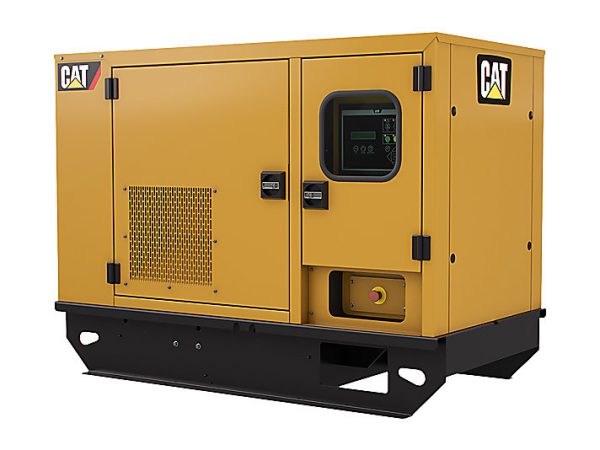Yeah, let’s change nothing about how we make it impossible or incredibly unattractive for young people to have kids, while also not allowing immigration and instead do… checks notes something with AI
AI technology for home appliances?
The best home appliances have no smart functionality in them; it’s merely another avenue for something to break.
I get where you’re coming from, but it’s not so black and white. Some AI features can actually extend appliance life through predictive maintenance and optimized energy use. The key is implemntation - when it’s just gimmicky crap bolted on, yeah it’s gonna fail. But when it’s thoughtfully integrated? Different story.
As a software engineer, hard disagree. There is no need for any AI in any of that. The device will have gone through various testing. If they wanted to implement this, they could use what they learnt in all the testing to set threshold values and run occasional diagnostics, all on-board with no internet, to know about such things. The only internet even required might be updates to those tables of values (or if a user wanted to opt in to sharing their data for whatever reason).
Computer vision to track inventory and expiration of food in a refrigerator could be useful for busy households. A dishwasher could cut its cycle short if it sees that dishes are clean, saving water and energy.
In addition, robots are home appliances that require AI. Robotic vacuum cleaners learn their surroundings and navigate using machine learning, so much so that ML textbooks commonly use them as teaching tools.
We’re also likely to see humanoid robots(or similarly flexible platforms) becoming household appliances in the near future.
It’s not unreasonable for countries to be investing in new technologies and AI is one of the more promising.
Computer vision to track inventory and expiration of food in a refrigerator could be useful for busy households
I don’t think this is a problem in a lot of the world. Commercial kitchens already have rules and inventory management systems. The only thing I could think of where it might be useful is looking for mold on things, but I suspect most people are using containers into which something couldn’t clearly see.
A dishwasher could cut its cycle short if it sees that dishes are clean, saving water and energy.
Maybe? It would still need to learn all the dishes the person has and what clean and nonclean versions are. That training and calling the model has its own environmental impacts and I don’t know that implementing it would save energy over the life of the appliance due to the extra costs in energy to train and call it.
My washer has settings for heavier and lighter washes based on what’s going in (as does my clothes washer)
In addition, robots are home appliances that require AI
They do not.
Robotic vacuum cleaners learn their surroundings and navigate using machine learning
This could all be done with sensors and rules and, in fact, was. Unless we’re being super loose with what “machine learning” means here. We’ve been teaching robots to semi-autonomously navigate courses and return for ages.
We’re also likely to see humanoid robots(or similarly flexible platforms) becoming household appliances in the near future.
That’s so gross to me personally that I don’t want to think about it. Both from a security as well as environmental perspective. I also disagree that it’s close, at least for how I think you’re using “close” here.
This could all be done with sensors and rules and, in fact, was. Unless we’re being super loose with what “machine learning” means here. We’ve been teaching robots to semi-autonomously navigate courses and return for ages.
They use sensor fusion, simultaneous localization and mapping (SLAM), path planning, reinforcement learning, computer vision, clustering and classification, and data analysis and feedback loops. All machine learning.
Neural networks are more efficient at computer vision than the old human-programmed methods and can be run on low performance hardware. Path planning and mapping could also be neural network based.
That’s so gross to me personally that I don’t want to think about it. Both from a security as well as environmental perspective. I also disagree that it’s close, at least for how I think you’re using “close” here.
Both BYD and Tesla have announced humanoid robots for around $10k starting next year.
https://www.geeky-gadgets.com/tesla-optimus-2-humanoid-robot/
Both BYD and Tesla have announced humanoid robots for around $10k starting next year.
I can’t speak to BYD, but Tesla has claimed all kinds of things that never materialize or are not what they claimed to be.
That aside, I don’t think most people have $10k laying around. Most couldn’t even afford a $1k expense (https://www.cbsnews.com/news/saving-money-emergency-expenses-2025/), so I don’t think we’ll be seeing any widespread adoption at that price in the near future (which is what I took your comment to mean, but maybe that’s not what you meant).
For clarity, I’m not someone who’s just anti-AI, I’m just someone who thinks it’s way over-hyped, is being shoved in places it doesn’t need to be (especially in a half-baked state), is an environmental disaster, and has many other problems.
It is definitely overhyped in the fields of language models and image/video generation. The idea that we’re going to have language models replacing people is completely hype. Those tools have some uses, but they’re not remotely close to the things that are being promised by the AI companies.
Hardly anyone pays attentions to the massive improvements being made in robotics or things like protein folding.
Sure, they’re expensive, but not prohibitively so and they’ll only get cheaper and better as investments are made. Investments like South Korea is doing.
Compare the early Boston Dynamics videos of their Big Dog robot using human programmed feedback control systems vs this robot trained using reinforcement learning: https://www.youtube.com/watch?v=I44_zbEwz_w
Programming a feedback control system is expensive and requires experts in multiple fields. Training models is a, relatively, simple process so the cost for robotics startups will be much lower. Motors, accelerometers, and image sensors and a strong graphics card is all you need. This process will be further sped up by foundational World Models which allows the training of a control system without any physical components as they’re trained in simulation.
LLMs are way overhyped, certainly, but that’s only a tiny portion of the things that neural networks are being used for.
Is that really AI (in the colloquial sense of the word like it is used in the article)? From memory such features were marketed in an industrial context around ~10 years ago.
AI and machine learning are often used interchangeably.
Neural networks, like the Transformer, are one of the techniques of machine learning.
Though some people only mean ChatGPT and DALL-E when they say AI, even though those are only one application of neural networks.
I usually just use AI and Machine Learning interchangeably. Unless you’re in a group of experts nobody really understands the distinction.
Good luck suckers. Easy mark, easy money.
“A grand transformation into AI is the only way out of growth declines resulting from a population shock,” the ministry said in a statement, referring to South Korea’s record low birthrate.
The funny bit is how “AI companions” are one of the most profitable uses of AI so far . See how THAT increases a country’s birthrate.
Lol
“That’s a bold strategy Cotton, let’s see if that works out for them.”
LG’s recent Exaone release is a pretty awesome local model for the size. A little deep-fried and repetitive, but great for code and stuff, which is especially notable since most decent models tend to only be good at Mandarin Chinese and English.
…Except they slapped an insane license on it. Basically you sign away your life away even looking at it: https://huggingface.co/LGAI-EXAONE/EXAONE-4.0-32B/blob/main/LICENSE
That is not the precedent. Many 32B class (aka 16GB-24GB VRAM GPU) models are Apache licensed. Hence, the ML tinkerer community has pretty much forgotten about it.





